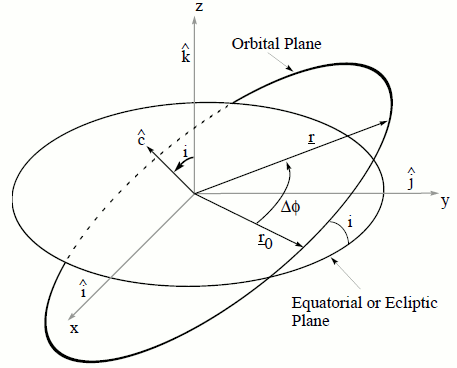
When the Space Shuttle launches due-east from the Kennedy Space Center the inclination of the vehicle’s orbit is 28.45 degrees. This is the same as the Space Center’s latitude. The “orbital inclination” is nothing more than the angle between the orbit and the equator, i.e., how “inclined” or “tilted” the orbit is. If the orbit stays right over the equator then the inclination is zero and if the orbit passed over the poles then the inclination is 90 degrees.
What this project investigated was a small increase in the orbital inclination for Space Station Freedom, and subsequently all Shuttle missions to the Station. We looked into the change because of the constraints imposed on launching the Shuttle due to where the External Tank re-entered the atmosphere and the debris landed in the Pacific. The goal was to find ways of increasing the payload capacity of flights to the Station. Since the cost to deliver payload to orbit is on the order of $10,000 per pound, and obviously there were going to be many missions to the Station, anything that could increase the delivery capacity could save NASA quite a bit of money.
What we found was that we saved at least 700 pounds of propellant if we increased the Station orbital inclination slightly, from 28.45 degrees to 28.80 degrees. All the details are in the presentation and paper below. If you do the math the cost savings could’ve been on the order of $100 million. Here’s where that figure comes from:
- Assume a minimum of 15 Shuttle station assembly flights.
- Savings per flight is at least 700 pounds.
- Cost per pound to orbit is on the order of $10,000
- $10,000 x 700 x 15 = $105,000,000.
NASA never realized the savings because the SSF project was canceled and replaced with the International Space Station (ISS) project. The orbital inclination for the ISS is about 51.64 degrees, which is the latitude of the Baikonur Cosmodrome. Oh, well–at least it was a lot of fun to research!
| Presentation Slides (scanned PDF) | Companion Paper(scanned PDF) |
